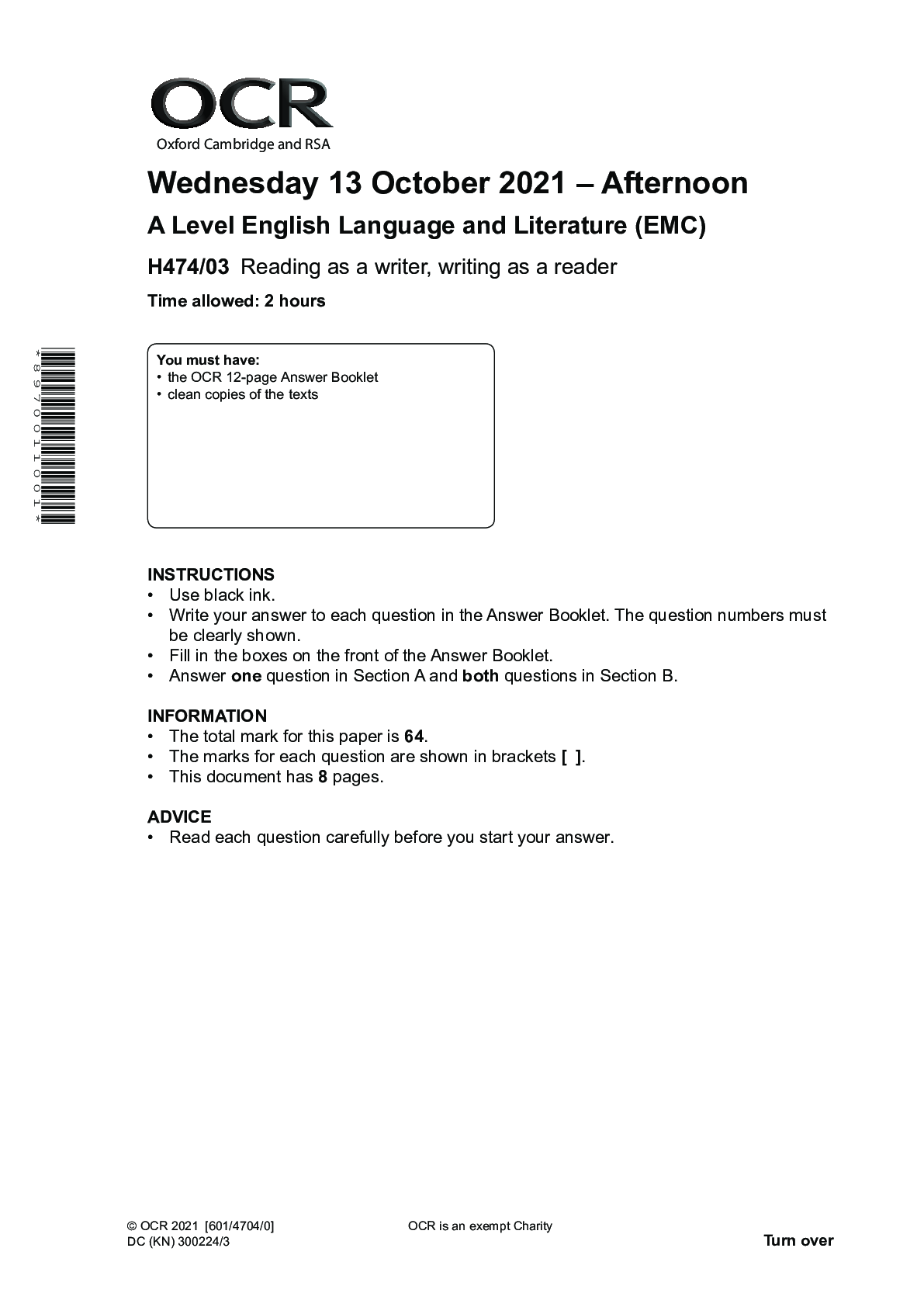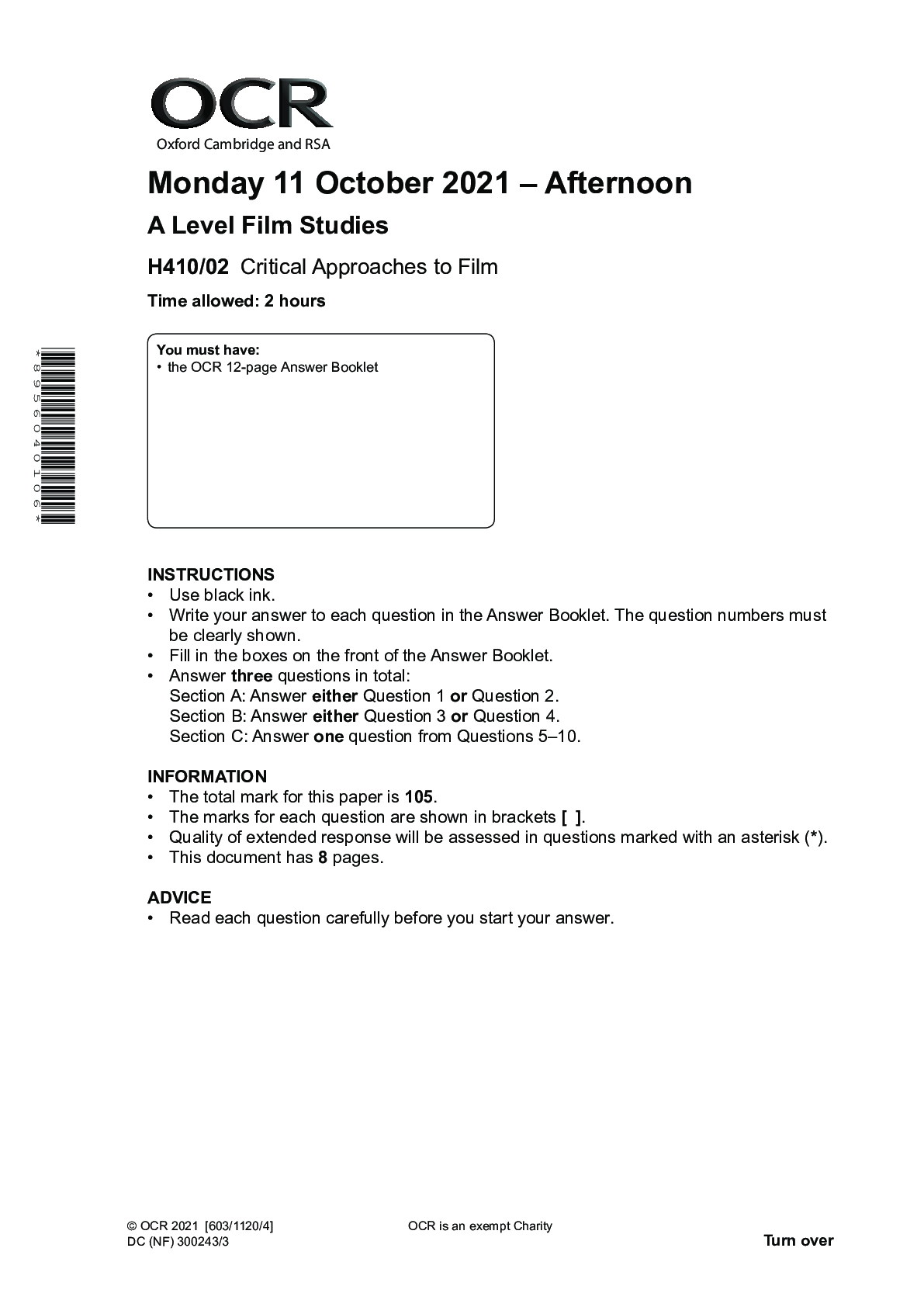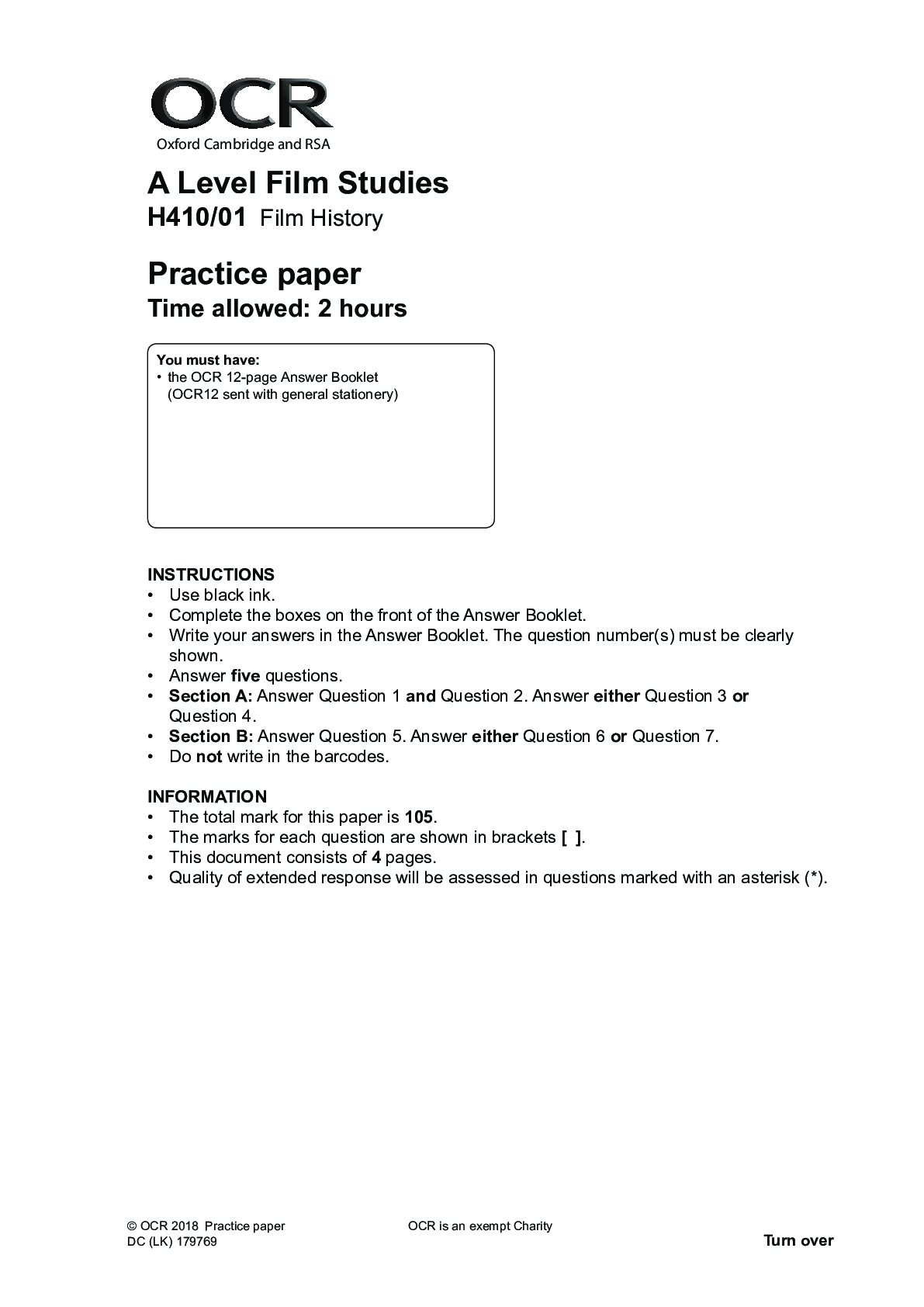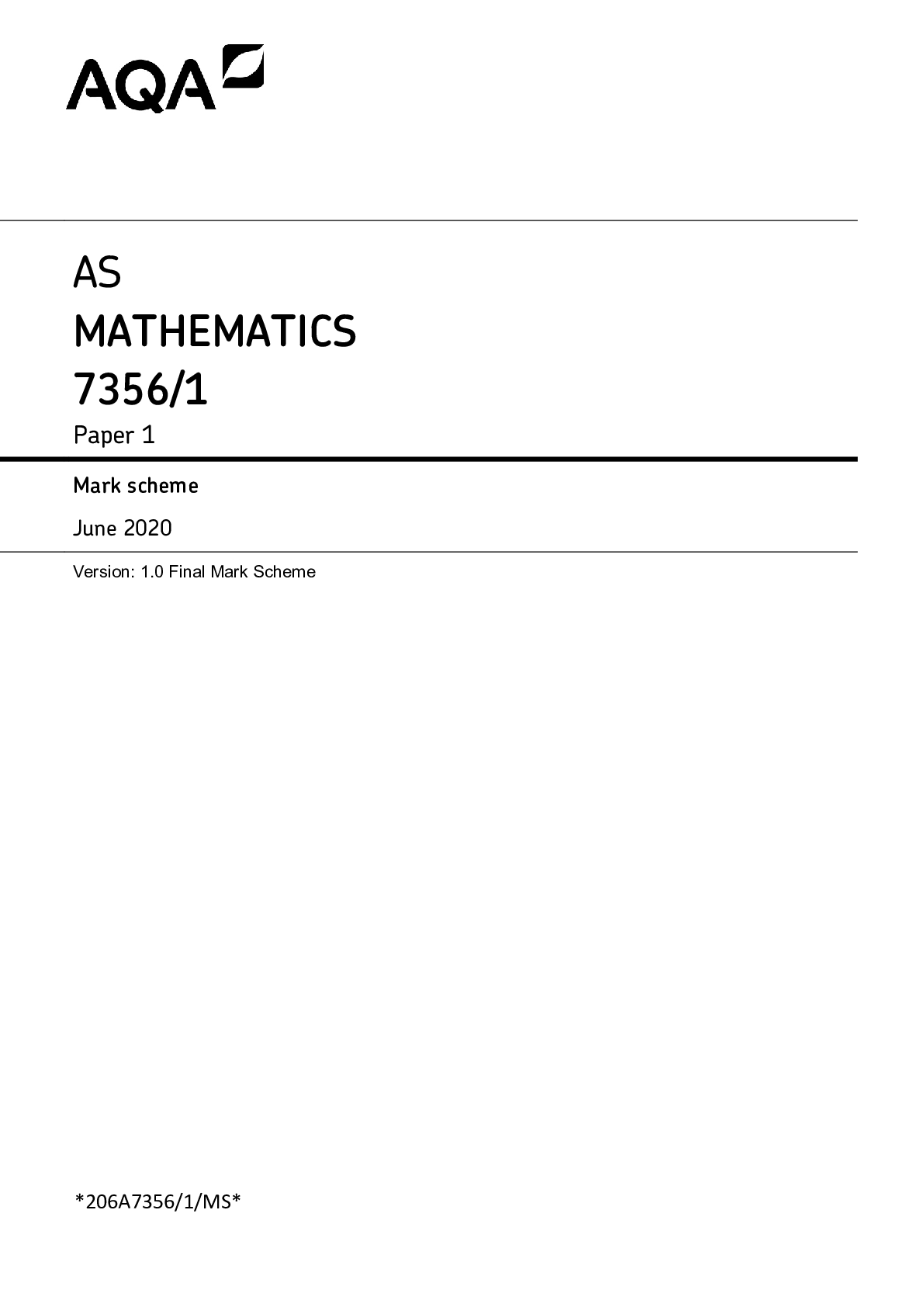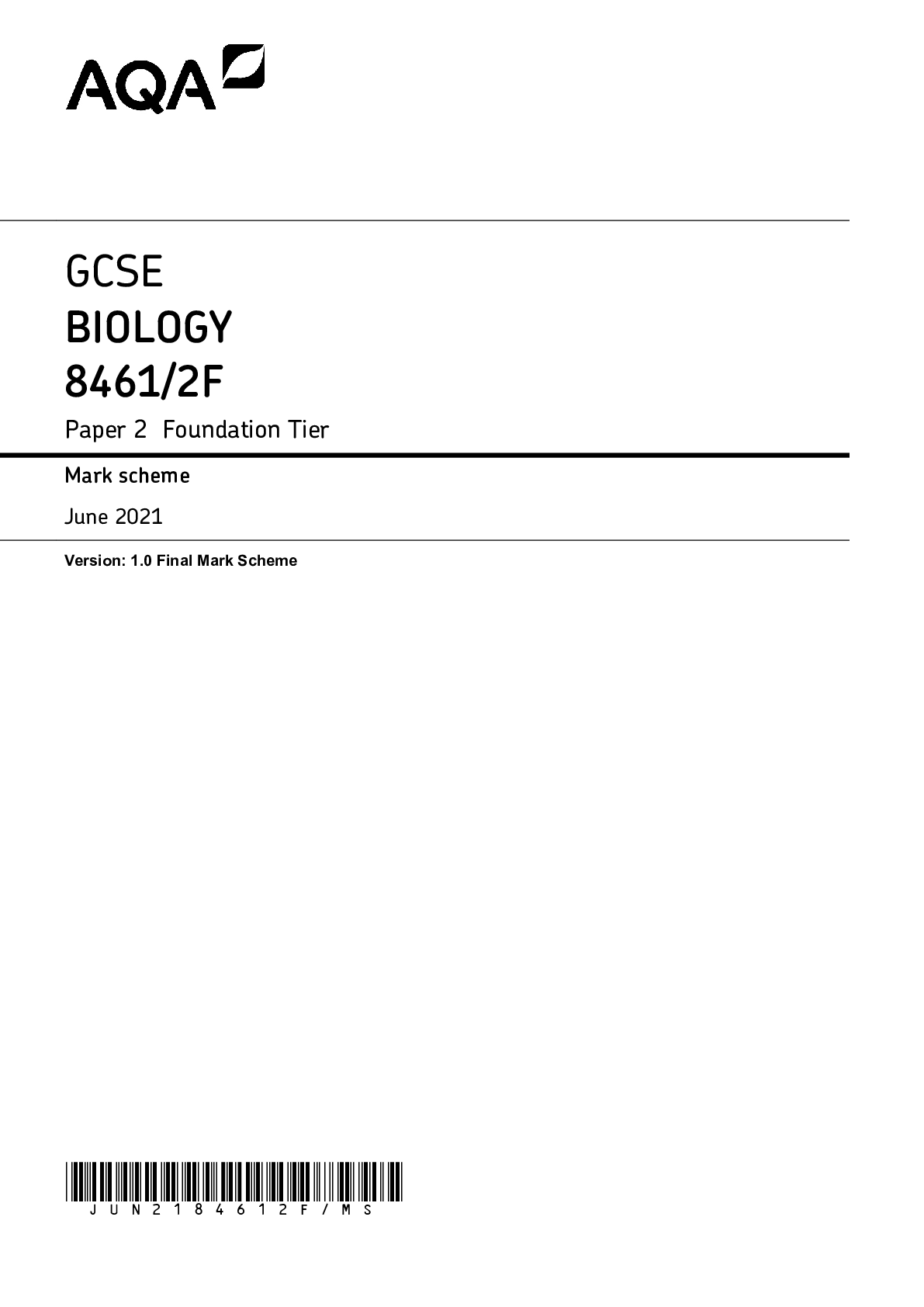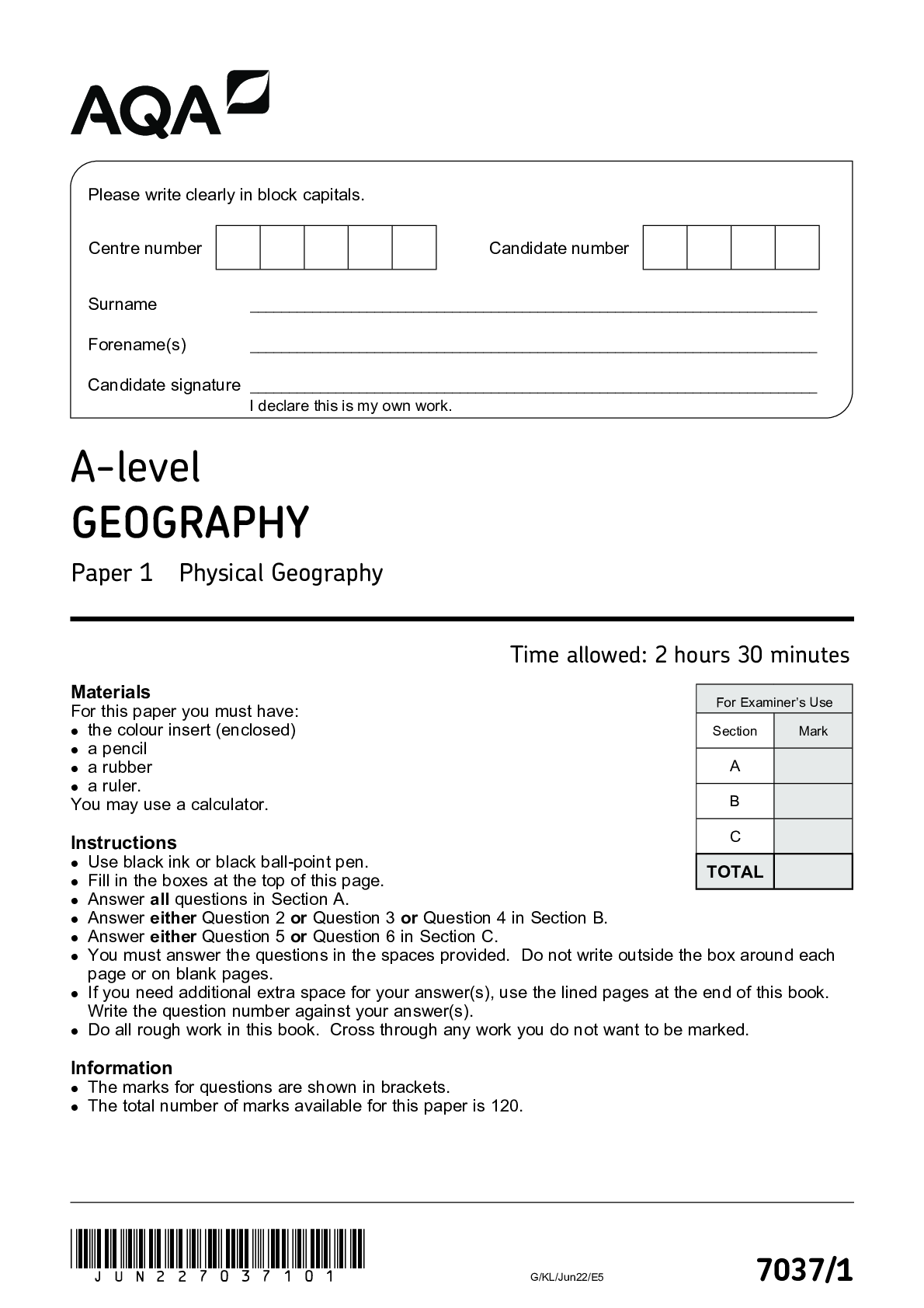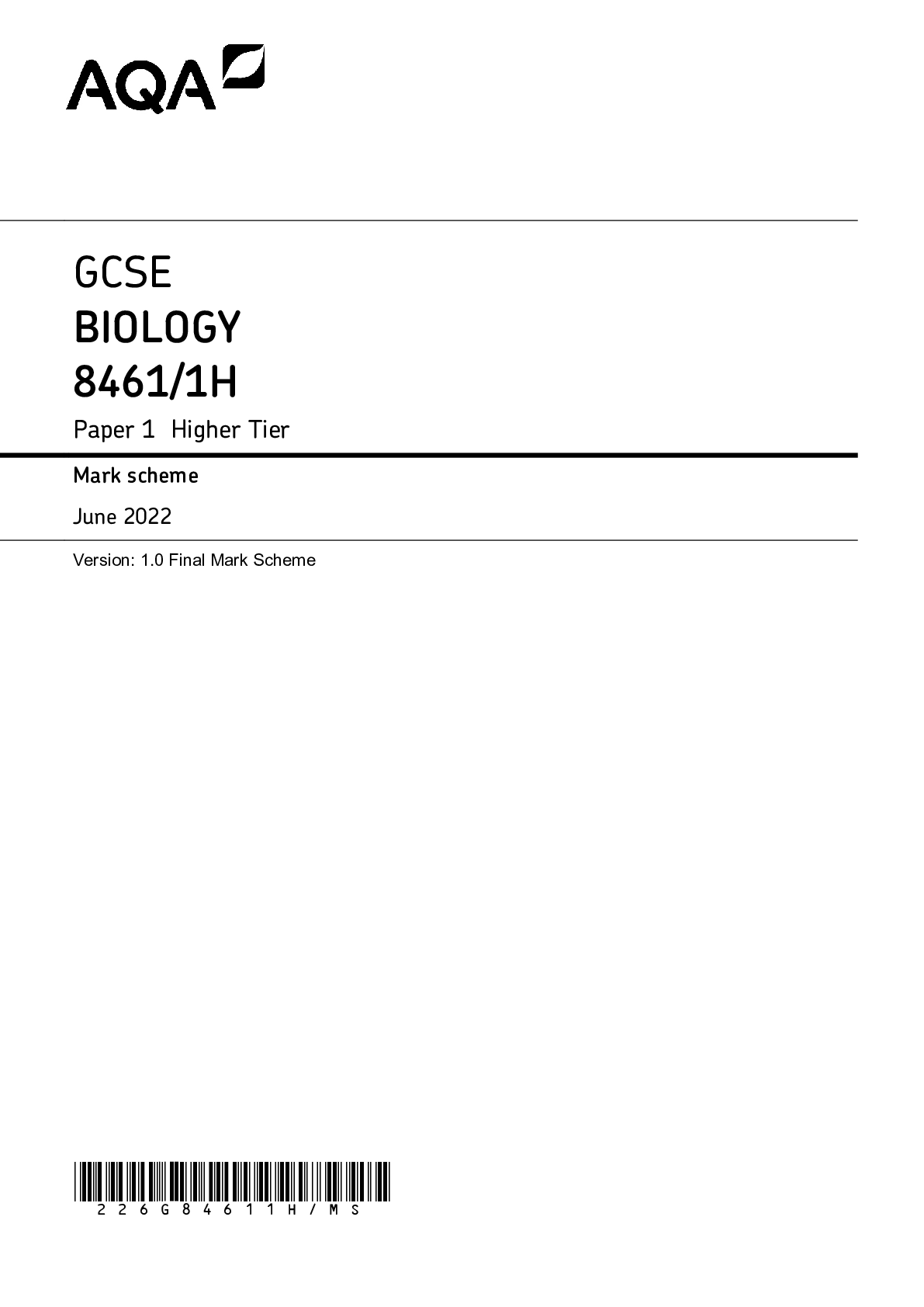Biology > QUESTION PAPER (QP) > GCSE BIOLOGY 8461/1H Paper 1 Higher Tier Mark scheme June 2021 Version: 1.0 Final Mark Scheme (All)
GCSE BIOLOGY 8461/1H Paper 1 Higher Tier Mark scheme June 2021 Version: 1.0 Final Mark Scheme
Document Content and Description Below
Marking of lists This applies to questions requiring a set number of responses, but for which students have provided extra responses. The general principle to be followed in such a situation is that... ‘right + wrong = wrong’. Each error/contradiction negates each correct response. So, if the number of error/contradictions equals or exceeds the number of marks available for the question, no marks can be awarded. However, responses considered to be neutral (indicated as * in example 1) are not penalised. Example 1: What is the pH of an acidic solution? [1 mark] Student Response Marks awarded 1 green, 5 0 2 red*, 5 1 3 red*, 8 0 Example 2: Name two planets in the solar system. [2 marks] Student Response Marks awarded 1 Neptune, Mars, Moon 1 2 Neptune, Sun, Mars, Moon 0 3.2 Use of chemical symbols/formulae If a student writes a chemical symbol/formula instead of a required chemical name, full credit can be given if the symbol/formula is correct and if, in the context of the question, such action is appropriate. 3.3 Marking procedure for calculations Marks should be awarded for each stage of the calculation completed correctly, as students are instructed to show their working. Full marks can, however, be given for a correct numerical answer, without any working shown. 3.4 Interpretation of ‘it’ Answers using the word ‘it’ should be given credit only if it is clear that the ‘it’ refers to the correct subject.MARK SCHEME – GCSE BIOLOGY – 8461/1H – JUNE 2021 5 3.5 Errors carried forward Any error in the answers to a structured question should be penalised once only. Papers should be constructed in such a way that the number of times errors can be carried forward is kept to a minimum. Allowances for errors carried forward are most likely to be restricted to calculation questions and should be shown by the abbreviation ecf in the marking scheme. 3.6 Phonetic spelling The phonetic spelling of correct scientific terminology should be credited unless there is a possible confusion with another technical term. 3.7 Brackets (…..) are used to indicate information which is not essential for the mark to be awarded but is included to help the examiner identify the sense of the answer required. 3.8 Allow In the mark scheme additional information, ‘allow’ is used to indicate creditworthy alternative answers. 3.9 Ignore Ignore is used when the information given is irrelevant to the question or not enough to gain the marking point. Any further correct amplification could gain the marking point. 3.10 Do not accept Do not accept means that this is a wrong answer which, even if the correct answer is given as well, will still mean that the mark is not awarded. 4. Level of response marking instructions Extended response questions are marked on level of response mark schemes. • Level of response mark schemes are broken down into levels, each of which has a descriptor. • The descriptor for the level shows the average performance for the level. • There are two marks in each level. Before you apply the mark scheme to a student’s answer, read through the answer and annotate it (as instructed) to show the qualities that are being looked for. You can then apply the mark scheme.MARK SCHEME – GCSE BIOLOGY – 8461/1H – JUNE 2021 6 Step 1: Determine a level Start at the lowest level of the mark scheme and use it as a ladder to see whether the answer meets the descriptor for that level. The descriptor for the level indicates the different qualities that might be seen in the student’s answer for that level. If it meets the lowest level then go to the next one and decide if it meets this level, and so on, until you have a match between the level descriptor and the answer. When assigning a level you should look at the overall quality of the answer. Do not look to penalise small and specific parts of the answer where the student has not performed quite as well as the rest. If the answer covers different aspects of different levels of the mark scheme you should use a best fit approach for defining the level. Use the variability of the response to help decide the mark within the level, ie if the response is predominantly level 2 with a small amount of level 3 material it would be placed in level 2 but be awarded a mark near the top of the level because of the level 3 content. Step 2: Determine a mark Once you have assigned a level you need to decide on the mark. The descriptors on how to allocate marks can help with this. The exemplar materials used during standardisation will help. There will be an answer in the standardising materials which will correspond with each level of the mark scheme. This answer will have been awarded a mark by the Lead Examiner. You can compare the student’s answer with the example to determine if it is the same standard, better or worse than the example. You can then use this to allocate a mark for the answer based on the Lead Examiner’s mark on the example. You may well need to read back through the answer as you apply the mark scheme to clarify points and assure yourself that the level and the mark are appropriate. Indicative content in the mark scheme is provided as a guide for examiners. It is not intended to be exhaustive and you must credit other valid points. Students do not have to cover all of the points mentioned in the indicative content to reach the highest level of the mark scheme. You should ignore any irrelevant points made. However, full marks can be awarded only if there are no incorrect statements that contradict a correct response. An answer which contains nothing of relevance to the question must be awarded no marks.MARK SCHEME – GCSE BIOLOGY – 8461/1H – JUNE 2021 7 Question Answers Extra information Mark AO / Spec. Ref. 01.1 any two from: • (microscope) slide • cover slip • dye / stain • (mounted) needle • pipette / dropper • scalpel • forceps / tweezers allow named dye / stain ignore water ignore knife allow swab (to collect cells) 2 AO1 4.1.1.5 RPA1 01.2 eyepiece / lens do not accept objective lens 1 AO1 4.1.1.5 RPA1 01.3 to focus (the image / cells) allow to make the cells / image clear(er) allow to improve resolution (of the image) ignore to move the stage up / down do not accept reference to magnification 1 AO1 4.1.1.5 RPA1 01.4 any one from: • no cells in the field of view • slide not in the correct position • mirror not in correct position • (objective) lens not clicked into place or (objective) lens dirty • (student is) looking at a (large) air bubble • (the microscope is) not focussed allow light / microscope not switched on / plugged in allow student did not stain the cells allow idea of magnification not being high enough 1 AO3 4.1.1.5 RPA1MARK SCHEME – GCSE BIOLOGY – 8461/1H – JUNE 2021 8 01.5 Level 2: Scientifically relevant features are identified; the way(s) in which they are similar/different is made clear and (where appropriate) the magnitude of the similarity/difference is noted. 4‒6 AO2 AO1 4.1.1.2 4.2.2.3 Level 1: Relevant features are identified and differences noted. 1‒3 No relevant content 0 Indicative Content Differences: • red blood cell has no nucleus or plant cell has a nucleus • red blood cell has no cell wall or plant cell has a cell wall • red blood cell is a biconcave disc or there are many different shapes of plant cell • red blood cell contains haemoglobin or plant cells do not contain haemoglobin • red blood cells do not contain chlorophyll or plant cells (may) contain chlorophyll • red blood cell has no chloroplasts or plant cell has chloroplasts • red blood cell has no (permanent) vacuole or plant cell has (permanent) vacuole • red blood cells are (much) smaller than plant cells Similarities: both have: • cytoplasm • cell membrane • pigments (although they are different) ignore references to mitochondria and ribosomes for Level 2, consideration of both red blood cells and plant cells is required. 01.6 water enters (the cells) by osmosis / diffusion plant cell has a cell wall (which prevents it from bursting) allow water enters and the cell starts to swell ignore explanations of osmosis allow red blood cell has no cell wall (so it swells and bursts) 1 1 AO2 AO1 4.1.3.2 4.1.1.2 Total 13MARK SCHEME – GCSE BIOLOGY – 8461/1H – JUNE 2021 9 Question Answers Extra information Mark AO / Spec. Ref. 02.1 any two from: • sterilise equipment / surfaces (before use) • (use) sterilised agar • secure lid of the Petri dish with (adhesive) tape • only lift lid of Petri dish a little (when setting up plate) or lift lid of Petri dish at an angle (when setting up plate) ignore ‘clean’ unqualified ignore wash hands allow description of how to sterilise equipment allow description of how to sterilise agar 2 AO1 4.1.1.6 RPA2 02.2 B and it kills the fewest bacteria or it has the smallest area where no bacteria were growing allow it has the smallest clear / white area [Show More]
Last updated: 2 years ago
Preview 1 out of 21 pages
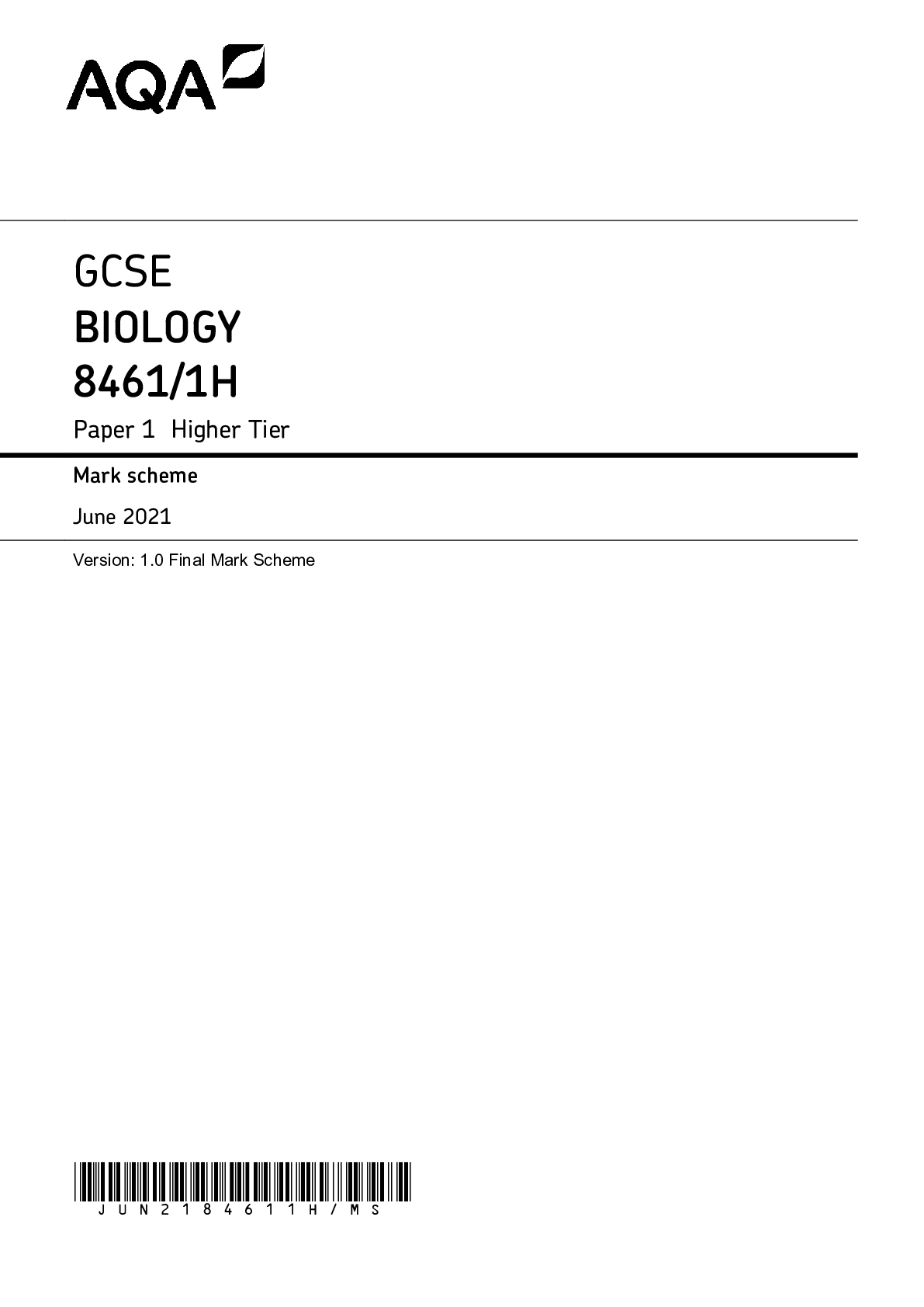
Buy this document to get the full access instantly
Instant Download Access after purchase
Buy NowInstant download
We Accept:

Reviews( 0 )
$7.00
Can't find what you want? Try our AI powered Search
Document information
Connected school, study & course
About the document
Uploaded On
May 31, 2022
Number of pages
21
Written in
Additional information
This document has been written for:
Uploaded
May 31, 2022
Downloads
0
Views
158

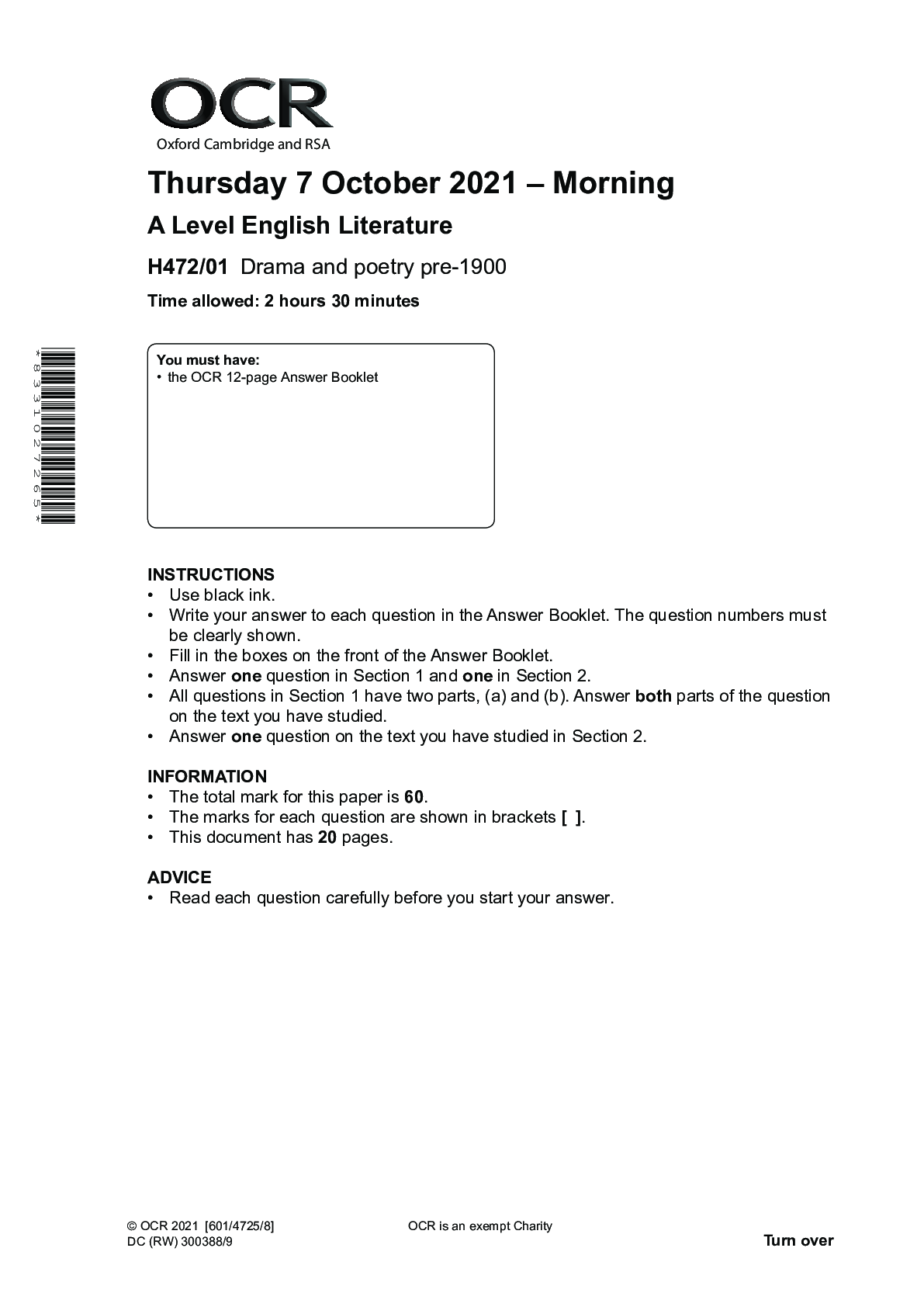
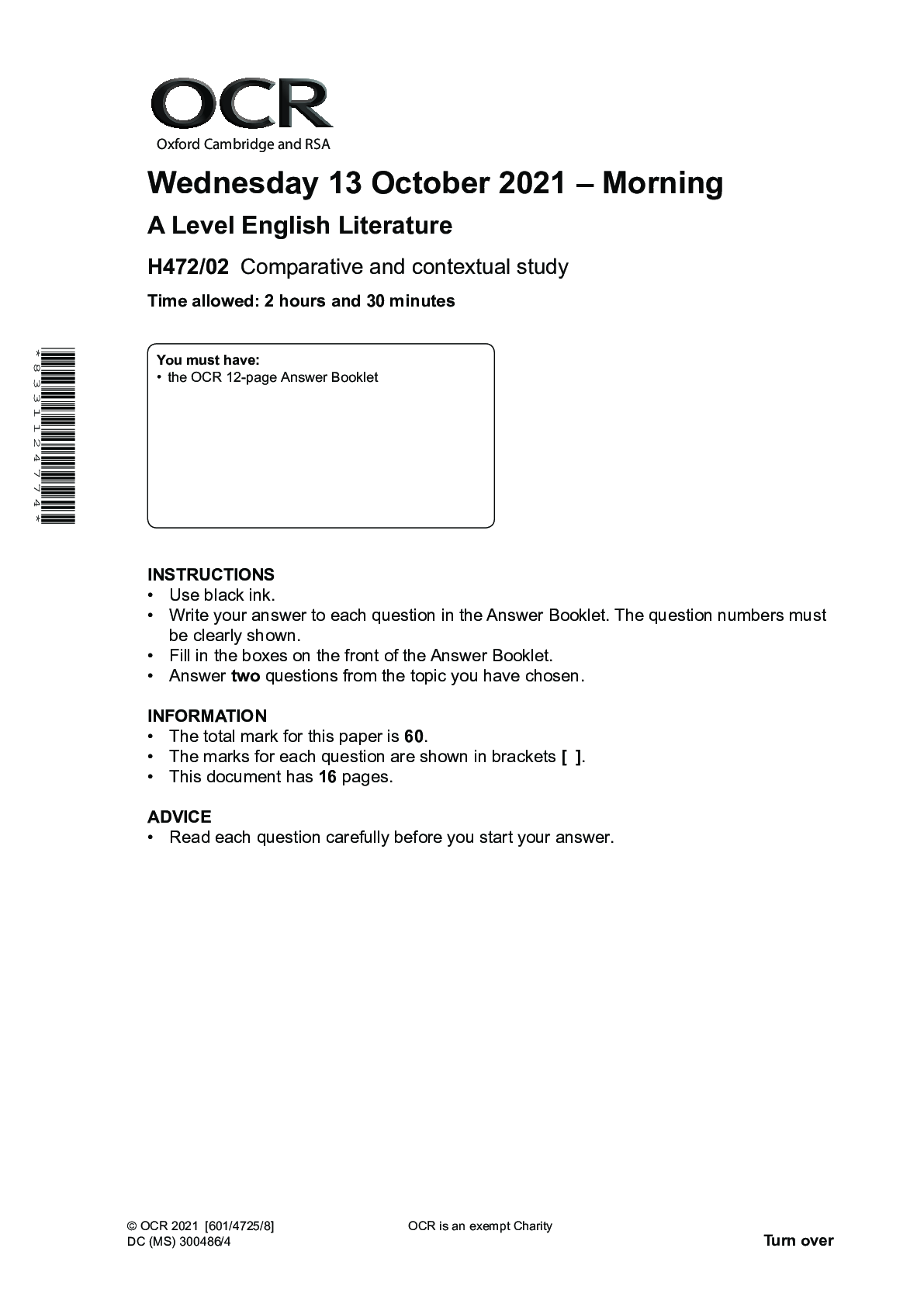
.png)
